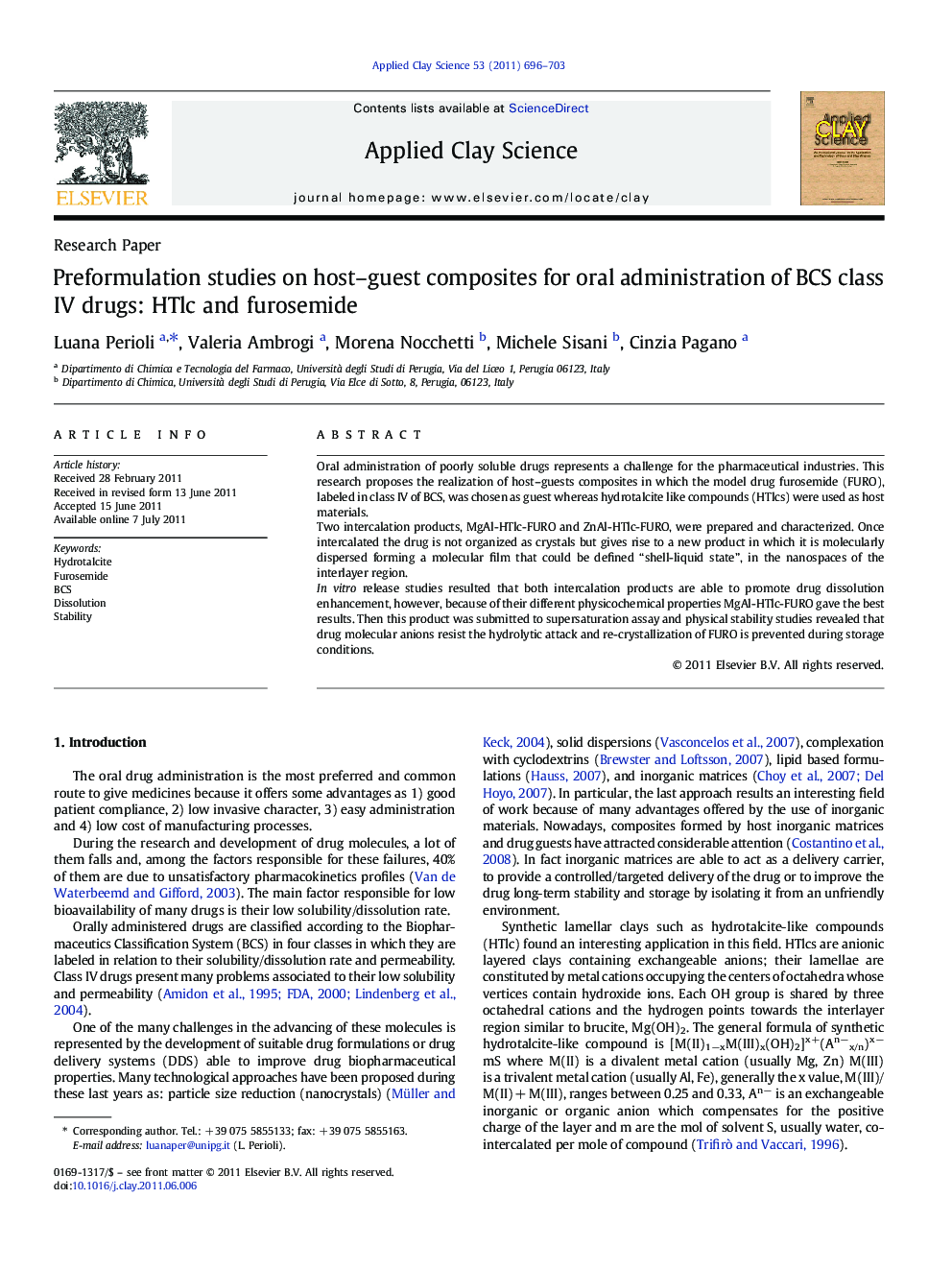| کد مقاله | کد نشریه | سال انتشار | مقاله انگلیسی | نسخه تمام متن |
|---|---|---|---|---|
| 1695429 | 1011859 | 2011 | 8 صفحه PDF | دانلود رایگان |

Oral administration of poorly soluble drugs represents a challenge for the pharmaceutical industries. This research proposes the realization of host–guests composites in which the model drug furosemide (FURO), labeled in class IV of BCS, was chosen as guest whereas hydrotalcite like compounds (HTlcs) were used as host materials.Two intercalation products, MgAl-HTlc-FURO and ZnAl-HTlc-FURO, were prepared and characterized. Once intercalated the drug is not organized as crystals but gives rise to a new product in which it is molecularly dispersed forming a molecular film that could be defined “shell-liquid state”, in the nanospaces of the interlayer region.In vitro release studies resulted that both intercalation products are able to promote drug dissolution enhancement, however, because of their different physicochemical properties MgAl-HTlc-FURO gave the best results. Then this product was submitted to supersaturation assay and physical stability studies revealed that drug molecular anions resist the hydrolytic attack and re-crystallization of FURO is prevented during storage conditions.
Figure optionsDownload as PowerPoint slideResearch highlights
► HTlc is able to store high drug percentages.
► FURO release from the intercalation product is better than the crystalline form.
► The intercalation of FURO into HTlc increases its physical stability.
Journal: Applied Clay Science - Volume 53, Issue 4, October 2011, Pages 696–703